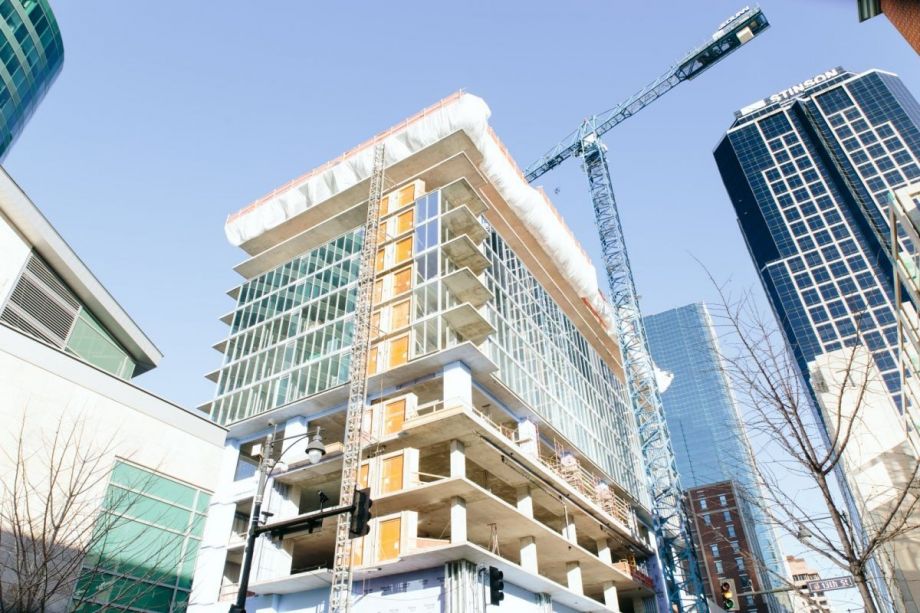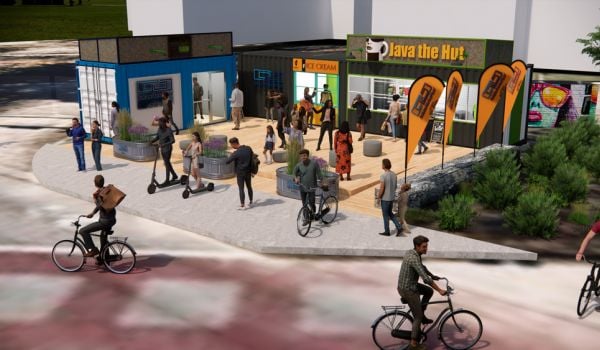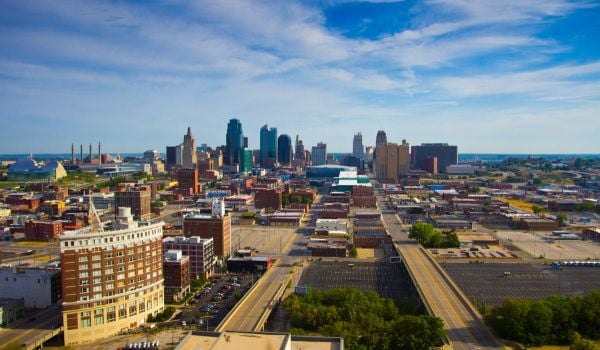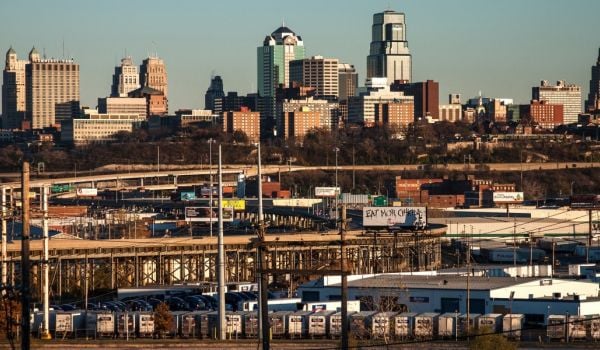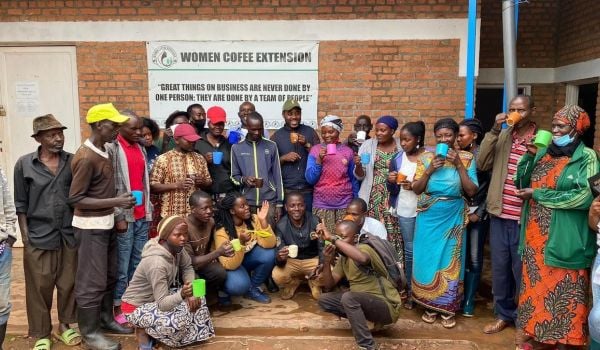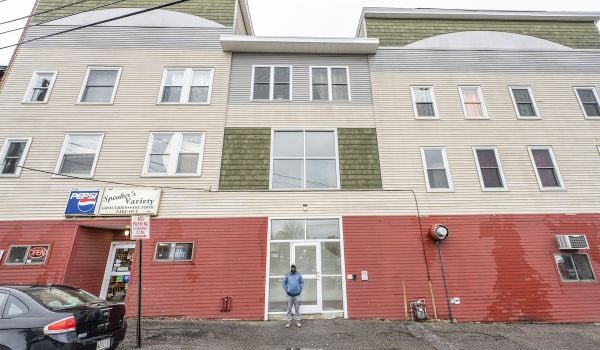Kansas Citians, no matter where they live, carry a huge piece of the place with them, and I’m no exception to that rule.
Fondness for one’s hometown is nothing unusual. But the fondness Kansas City, Missouri, natives have for theirs strikes this native as unusually deep and strong. Whenever I meet a K.C. expat in my travels, the conversation immediately shifts to talk of home: the neighborhoods where we lived, the haunts we frequented, the places we loved and, of course, the barbecue we ate. I’ve even had perfect strangers embrace me the moment they found out that we shared hometowns.
I was raised in a changing Kansas City (I left for college in 1976), and on a visit last year, I saw how the city is changing once again. I was there, in part, reporting my recent Next City feature, “The $295 Million Mall Taxpayers Bought Kansas City,” which explores the development of the city’s Power & Light District, a popular entertainment-restaurant-shopping destination.
But shiny new attraction districts aside, the winds of change that once promised progress and inclusion for all Kansas Citians seem to have shifted direction sometime between the 1970s and now. For all the progress I saw around me on that visit, I got the sense that my Kansas City — the one the tourists don’t visit — was being left behind while the other one forged ahead.
Promise of a New Kansas City
A start toward a new Kansas City had just begun a few years before I was born in 1958. The covenants that had kept black families like mine confined to a small corner of the city were struck down as unenforceable not long before my parents bought my childhood home in 1954 in a white middle-class neighborhood on the East Side.
Change gathered steam as I came of age. Winning a municipal referendum related to racial discrimination in 1964 marked the arrival of the city’s black community (which had never been denied the vote) as a political force in its own right. The sense of newfound power that swept through the community felt less like the end of an injustice, though, and more like a long overdue acknowledgement that blacks were to be partners in the city’s progress.
There were still matters that the newly empowered black political leadership ended up fighting the city and the state over. One was the “freeway the East Side didn’t want.” I knew it as the South Midtown Freeway, and its route split the East Side in two. After years of lawsuits and a stalemate, the city’s first black mayor got the road built by downgrading the section that ran a few blocks west of where my grandmother lived. That road is now known as Bruce Watkins Drive, named for a prominent black businessman.
There was also the schools battle. White families withdrew their support for the tax hikes needed for upkeep after the district proposed busing for racial balance. The school district began busing black students from my neighborhood school to alleviate overcrowding when I was in third grade. My mother put me into the city’s best private school, Pembroke-Country Day, just as the public schools began a long decline. Years of lawsuits culminated in a sweeping court order that led to the construction of lavishly equipped magnet high schools designed to lure white students from outlying districts with college-quality facilities. Not only did the white students not come, the schools’ performance on state tests worsened, and in 2011, the state withdrew the Kansas City Public Schools’ accreditation. It has since regained it provisionally, but the move threw an obstacle in the path of civic resurgence and hit the East Side especially hard.
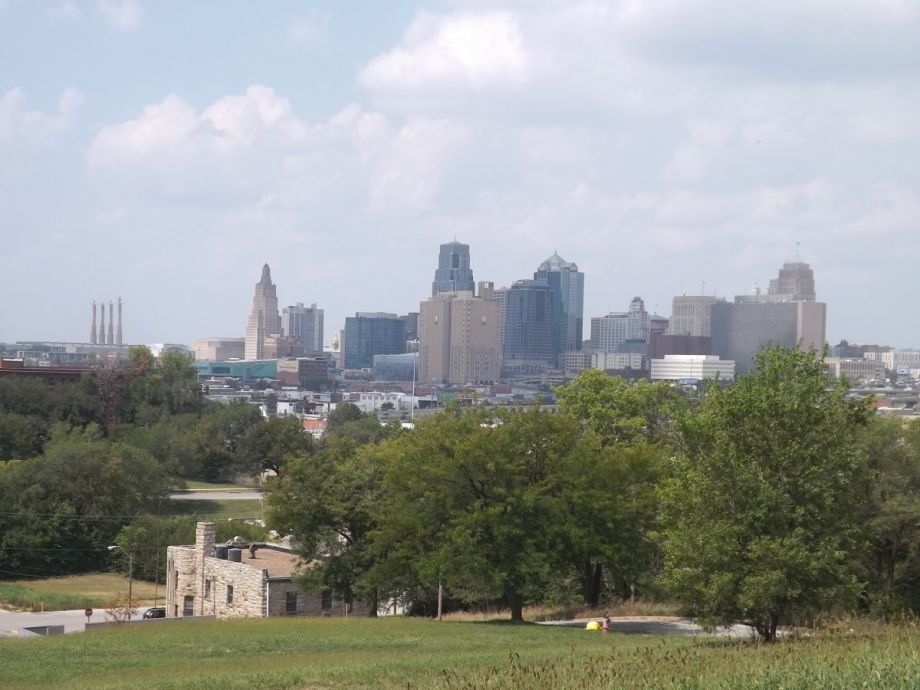
The post’s author could not have taken this 2014 photo from where he did when he was growing up in Kansas City. He would have been in the middle of someone’s home. The area in the foreground — the old heart of Kansas City’s black community — has been almost completely emptied out. At least one block (1800 block of Highland) has been lovingly restored — but it’s now a largely empty quarter. (Photo by Sandy Smith)
Where a Tree Canopy Hides Reality
Black, white and green were the primary colors of my youth. Black and white because this is America, after all, and K.C. is, or at least sees itself as, the most American of cities. It’s the closest large city to the geographic center of the 48 states and the one that’s often held up, for better and for worse, as the perfect example of Middle American virtue. As black-white race relations remain the great American social issue thanks to the legacy of slavery, so we should expect to find it a salient matter in “The Heart of America.”
The “green” in my childhood was because of where I lived, just off one of the city’s famed boulevards. Those who have never seen Kansas City have no idea just what a verdant city it is thanks to its system of parks and boulevards, an early 20th-century improvement that has led numerous visitors to marvel at the city’s loveliness.
Before last year, I was already impressed by the K.C. I had seen on a 2006 visit. The city seemed more confident, less defensive of its status as a Bona Fide Big City that the folks on the coasts should respect. And it had a livelier night scene than the city I’d left in the ‘70s. By 2006, Westport, the oldest part of the city, had blossomed into an entertainment district packed with bars, restaurants and clubs, and I even managed to stumble across a club with live jazz on the Country Club Plaza, another civic jewel.
The K.C. I visited last summer was more impressive still: The Crossroads Arts District was still in the process of becoming when I was there almost 10 years ago. The Kauffman Center for the Performing Arts wasn’t even a dream. The majestic elms that lined Benton Boulevard in my home neighborhood, felled by Dutch elm disease in the 1960s, had found worthy replacements in the trees that once again turned the street into a green cathedral.
But beneath that tree canopy I also could see a different, less pleasant reality. The homes that housed stable working families when I grew up were now tattered, or even abandoned. My own boyhood home was now just a plot of grass, a casualty of the spread of meth, the crack of the Great Plains. All of those sparkling, lively entertainment districts were on the other side of town, across Troost Avenue, the north-south thoroughfare whose name is shorthand for the city’s persistent racial divide. Meanwhile, across the street from a now-shuttered high school (Lincoln), what had been a neighborhood full of homes, the heart of the city’s black community for decades, had reverted to prairie. It seemed that the only good things left on the East Side were the barbecue joints and Swope Park.
Race relations in Kansas City are far better than in St. Louis — on that my K.C. cousins agree with me. And that in turn has meant that most white Kansas Citians have accepted the city’s two black mayors, including current Mayor Sly James, and black Congressman Emanuel Cleaver II, the first of those two mayors, as their own too. But it hasn’t meant that the fruits of the city’s resurgence have been evenly distributed, a fact that a drive down Prospect Avenue, the main commercial street on the East Side, brings home starkly. I grew up catching buses on Prospect that took me downtown or to my grandparents farther south. The street the buses ply today is nearly bereft of activity, in stark contrast to West Side streets like Broadway and Main Street. No one, not even the leaders who speak for the city’s black residents, has figured out how to revive it yet.
But I hope those leaders keep trying, and that they get the rest of the city to join them. The financial burden of the Power & Light District bond may keep the city from being as much of a partner as it might have once been, but the city has long prided itself on its roll-up-your-sleeves, get-things-done spirit. I for one hope that, with private initiative backed by city cooperation, my next trip home will include a visit to a Jazz District whose clubs swing into the night the way they did in the days of Boss Tom. I’d like to see a Prospect Avenue revived with restaurants and small shops run by neighborhood entrepreneurs. And I’d like to see the homes beneath those majestic trees on Benton Boulevard restored to the charm they once possessed. All of this will be a little harder with the Power & Light District debt hanging over city hall, but it’s not impossible. If a bunch of artists could bring a city district back from the dead, surely someone out there can bring the East Side back to life too.

Next City contributor Sandy Smith is the home and real estate editor at Philadelphia magazine. Over the years, his work has appeared in Hidden City Philadelphia, the Philadelphia Inquirer and other local and regional publications. His interest in cities stretches back to his youth in Kansas City, and his career in journalism and media relations extends back that far as well.
Follow Sandy .(JavaScript must be enabled to view this email address)

